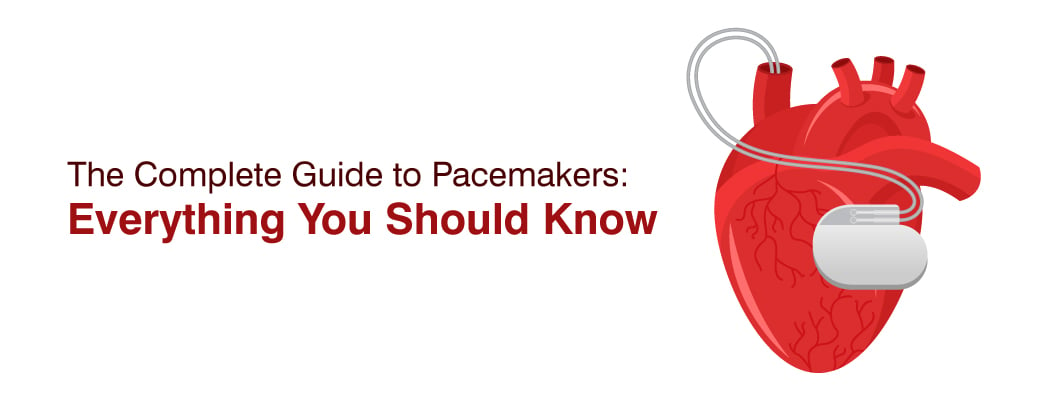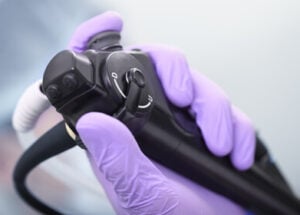What is a Pacemaker and How Does it Work?
April 23, 2025

A pacemaker is a small device implanted in the chest or abdomen that helps regulate an irregular heartbeat by generating electrical impulses to restore a normal heart rhythm. Pacemakers are commonly used to treat arrhythmias or other heart conditions that cause the heart to beat too slowly or irregularly. In this blog, we will explore the basics of pacemakers, including how they work, the conditions they treat, and what you need to know if you are considering getting one.
What is a Pacemaker?
A pacemaker is a small device that’s implanted under the skin of the chest or abdomen. It’s connected to the heart by one or more wires (also known as leads) that are inserted into a vein and guided to the heart. The pacemaker’s job is to monitor the heartbeat and generate electrical impulses to regulate it when necessary.
How Do Pacemakers Work?
Pacemakers work by detecting when the heart is beating too slowly or irregularly. When this happens, the pacemaker sends a small electrical impulse to the heart muscle to stimulate a heartbeat. The impulse is delivered through the wires that are connected to the heart.
What Conditions Do Pacemakers Treat?
Pacemakers are commonly used to treat arrhythmias or other heart conditions that cause the heart to beat too slowly or irregularly. Some of the conditions that may be treated with a pacemaker include:
- Bradycardia: a slow heartbeat that can cause dizziness, fatigue, or fainting
- Tachycardia-bradycardia syndrome: a condition in which the heart alternates between a fast and slow heartbeat
- Heart block: a condition in which the electrical signals that regulate the heartbeat are interrupted or blocked
What are the Signs You Need a Pacemaker?
Some of the signs that you may need a pacemaker include:
- Feeling dizzy or lightheaded
- Fainting or feeling like you’re going to faint
- Fatigue or weakness
- Shortness of breath
- Chest pain
- Irregular heartbeat or palpitations
If you’re experiencing any of these symptoms, it’s important to see your doctor as soon as possible.
What are the Different Types of Pacemakers?
There are several types of pacemakers, including:
- A leadless pacemaker is a miniature device, approximately the size of a large pill, that is implanted into the heart using a catheter-based procedure. Unlike traditional pacemakers, it does not require wires, as it is directly attached to the inner wall of the heart.
- Single-chamber pacemakers have a single wire that is connected to either the right atrium or the right ventricle of the heart.
- Dual-chamber pacemakers have two wires connected to the right atrium and ventricle of the heart.
- Biventricular pacemakers have three wires connected to the heart’s right atrium, right ventricle, and left ventricle. These are used to treat heart failure.
What’s the Difference Between a Pacemaker and an ICD?
While pacemakers are used to regulate an irregular heartbeat, implantable cardioverter-defibrillators (ICDs) are used to treat life-threatening arrhythmias. ICDs are similar to pacemakers in that they’re implanted under the skin and connected to the heart by wires. However, ICDs also have a defibrillator function that can deliver a shock to the heart if it’s beating dangerously fast or irregularly.
What are the Possible Benefits of Pacemakers?
Pacemakers can improve the symptoms associated with an irregular heartbeat, such as dizziness, fainting, and fatigue. They can also improve a person’s overall quality of life and reduce the risk of serious complications like stroke or heart failure.
What are the Possible Complications or Side Effects of Having a Pacemaker?
While pacemakers are generally safe and effective, there are some possible complications or side effects, including:
- Infection at the site of the implant
- Bleeding or bruising around the site of the implant
- Damage to the blood vessels or nerves near the implant site
- Dislodgement or malfunction of the wires or device
- It is essential to discuss the potential risks and benefits of a pacemaker with your doctor before deciding to have one implanted.
When to Call the Doctor?
If you have a pacemaker and you experience any of the following symptoms, you should contact your doctor right away:
- Chest pain or discomfort
- Shortness of breath
- Swelling, redness, or drainage at the site of the implant
- Fainting or feeling like you’re going to faint
- Rapid or irregular heartbeat
Your doctor will likely refer you to a cardiologist or electrophysiologist, who is a specialist in diagnosing and treating heart rhythm disorders.
Considering a Pacemaker: What You Should Know
A pacemaker is a small device that’s implanted under the skin to regulate an irregular heartbeat. It’s commonly used to treat conditions such as bradycardia, tachycardia-bradycardia syndrome, and heart block. Pacemakers can improve symptoms and quality of life, but also have potential risks and side effects. If you’re considering getting a pacemaker, it’s important to discuss the potential benefits and risks with your doctor and ask any questions you may have.
Frequently Asked Questions
1. What exactly does a Pacemaker do?
A pacemaker is a small, battery-powered device that helps regulate your heartbeat. It sends electrical signals to your heart when your natural heartbeat is too slow, too fast, or irregular. The pacemaker consists of two parts: a generator and one or more leads (wires) that transmit the electrical signals to the heart. The generator is typically placed under the skin, on the left side of the chest, while the leads are inserted into the heart through a vein.
2. Is a pacemaker a serious surgery?
Implanting a pacemaker is considered a relatively safe and routine surgery. However, like any surgery, it carries some risks, such as infection, bleeding, or damage to the blood vessels or nerves near the implant site. Most people who have a pacemaker implanted can resume their normal activities within a few days to a few weeks.
3. What is the life expectancy of a person with a pacemaker?
Having a pacemaker usually does not affect a person’s life expectancy. Most pacemakers are designed to last between 5 and 15 years, depending on the type and how often it is used. When the battery starts to run low, a minor surgery is needed to replace the device. Regular check-ups with a cardiologist are important to make sure the pacemaker is working properly and to adjust the settings if necessary.






